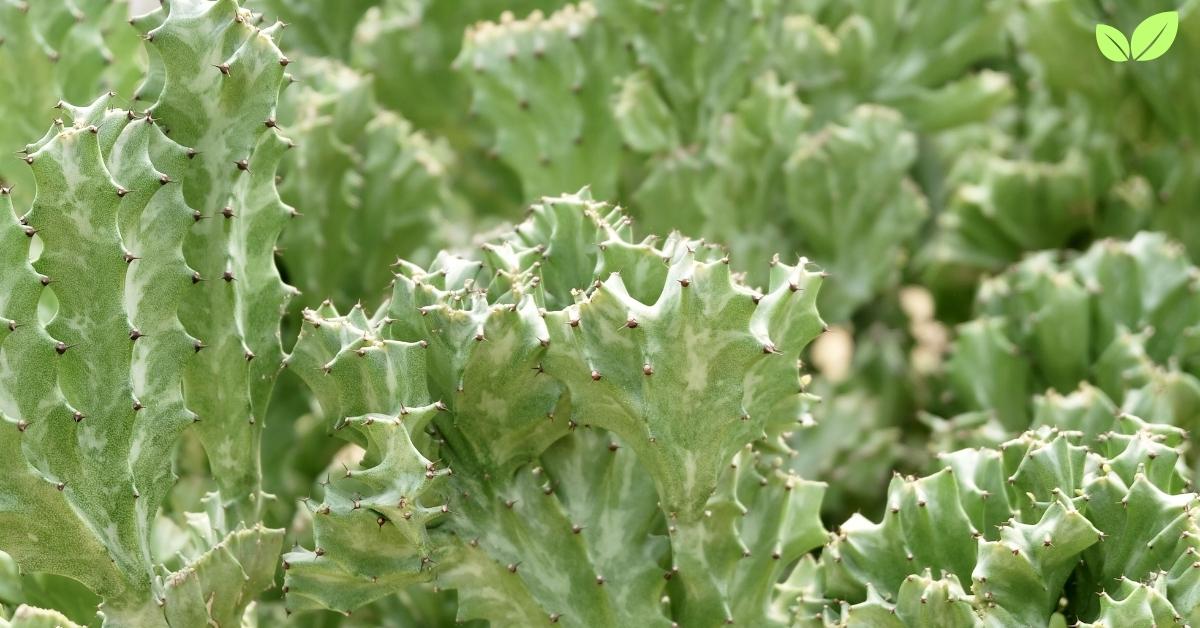Euphorbia lactea, commonly known as the Mottled Spurge or Dragon Bones plant, is a unique and striking succulent native to tropical regions of India and Sri Lanka. Known for its intricate, often contorted branches and strikingly patterned stems, Euphorbia lactea has become a popular choice among plant enthusiasts, both for ornamental gardens and indoor collections. However, its role extends beyond mere aesthetics. In its native environment and beyond, Euphorbia lactea plays a critical role in maintaining ecological balance, supporting soil health, and offering benefits to various organisms. This article explores the environmental niche of Euphorbia lactea, delving into its habitat, physical characteristics, ecological roles, interactions with other species, and the challenges it faces in cultivation and conservation.
1. Understanding Euphorbia lactea
Euphorbia lactea is part of the large and diverse Euphorbia genus, which includes over 2,000 species of succulents, trees, and shrubs. Its distinctive appearance, marked by angular, mottled branches, makes it a standout in any landscape. Like many members of the Euphorbia genus, Euphorbia lactea produces a milky latex sap, which plays a crucial role in its survival and interactions with other species.
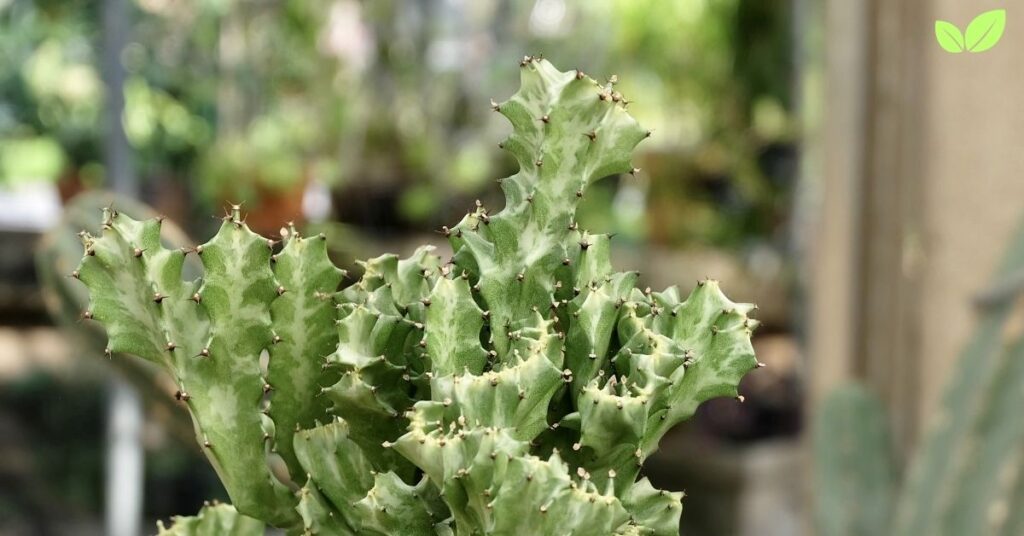
1.1. Physical Characteristics of Euphorbia lactea
- Stem Structure: Mottled Spurge is characterized by its angular, ridged stems, which can grow up to 5 to 6 feet (1.5 to 1.8 meters) tall when left to grow naturally outdoors. The stems are typically three- or four-sided, with pronounced ribs and small spines along their edges. They are often mottled with pale green and white patches, which give the plant its common name.
- Latex Production: One of the key features of Euphorbia lactea is its production of a milky latex sap. This sap contains compounds that deter herbivores and protect the plant from pests. However, the latex is toxic to humans and animals if ingested or if it comes into contact with skin, making caution necessary when handling the plant.
- Growth Habit: Euphorbia lactea has a candelabra-like branching structure, with new branches often forming at right angles from the main stem. This unique form makes it a popular choice for sculptural planting in gardens and as a potted plant.
1.2. Variants and Cultivars
Euphorbia lactea has several cultivars and variations, some of which are particularly prized in horticulture:
- Euphorbia lactea ‘Cristata’: Commonly known as the Coral Cactus, this is a crested form of Euphorbia lactea. It features wavy, fan-like crests that resemble coral, making it a popular choice for collectors.
- Variegated Euphorbia lactea: Some varieties of Mottled Spurge exhibit variegation, with white, cream, or yellow stripes running through the green stems. This variegation adds to the plant’s ornamental appeal and makes it a standout in mixed succulent arrangements.
2. Habitat and Distribution of Euphorbia lactea
Euphorbia lactea is native to tropical regions, where it thrives in arid and semi-arid environments. Its ability to adapt to challenging conditions has allowed it to spread beyond its native range, finding a niche in various landscapes and climates.
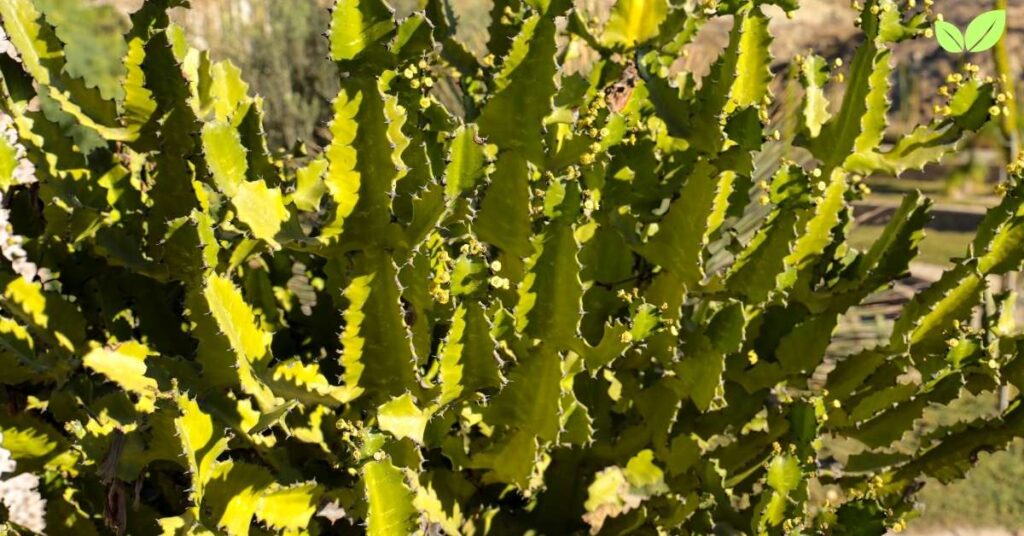
2.1. Native Range
- India and Sri Lanka: Euphorbia lactea is native to India and Sri Lanka, where it grows in the wild as part of dry forests, rocky hillsides, and scrubland. In these regions, it thrives in well-draining, sandy soils that mimic the arid conditions it is adapted to.
- Cultivation Beyond Native Range: Due to its striking appearance and adaptability, Euphorbia lactea has been introduced to other tropical and subtropical regions around the world, including parts of Southeast Asia, the Caribbean, and southern parts of the United States.
2.2. Preferred Habitats
Euphorbia lactea is well-suited to environments that provide conditions similar to its native arid habitats:
- Soil Requirements: This species prefers well-draining soils, such as sandy or rocky substrates. It is often found in areas where rainfall is low and the soil does not retain excess moisture, helping to prevent root rot.
- Sunlight and Temperature: Euphorbia lactea thrives in full sun to partial shade. It requires warm temperatures, ideally between 15°C and 30°C (59°F to 86°F). It is not frost-tolerant and can suffer damage or die if exposed to temperatures below 5°C (41°F).
- Drought Tolerance: As a succulent, Euphorbia lactea is highly adapted to survive periods of drought. It stores water in its thick, fleshy stems, allowing it to endure extended dry spells. This adaptation makes it ideal for xeriscaping and low-water gardening.
3. Ecological Role of Euphorbia lactea
In its natural habitat and in cultivated environments, Mottled Spurge plays several ecological roles, from providing shelter and food for certain species to contributing to soil health and stabilizing arid landscapes.

3.1. Role in Arid and Semi-Arid Ecosystems
Euphorbia lactea is well-adapted to thrive in arid and semi-arid ecosystems, where it helps to maintain ecological balance:
- Soil Stabilization: The root system of Euphorbia lactea helps stabilize the soil in dry, rocky regions. By anchoring the soil, it reduces erosion, especially in areas that experience seasonal rains. This function is crucial in arid landscapes where soil loss can be a significant ecological challenge.
- Microhabitats for Insects: The intricate structure of Euphorbia lactea provides microhabitats for a variety of small insects, including ants and beetles. These insects may use the plant for shelter, feeding on decaying organic matter that accumulates around its base or using it as a place to hide from predators.
- Supporting Pollinators: Although the flowers of Euphorbia lactea are small and not particularly showy, they do attract certain pollinators, such as small bees and flies. These pollinators contribute to the plant’s reproductive success and play a role in the broader pollination networks of arid regions.
3.2. Chemical Defense Mechanisms
Euphorbia lactea has developed chemical defenses that protect it from herbivores and environmental stressors:
- Latex as a Deterrent: The milky latex produced by Mottled Spurge contains diterpenes and other toxic compounds that deter herbivores. This latex can cause irritation if it comes into contact with skin or mucous membranes, effectively preventing animals from browsing on the plant.
- Allelopathy: Some species of Euphorbia are known to have allelopathic properties, releasing chemicals into the soil that inhibit the growth of nearby plants. While this has not been extensively studied in Euphorbia lactea specifically, such a trait could influence the composition of plant communities around it.
4. Cultivation and Use in Landscaping
Euphorbia lactea has become a popular plant in ornamental gardening due to its unique form and drought-tolerant nature. It is particularly valued in xeriscaping and as a low-maintenance option for indoor and outdoor gardens.
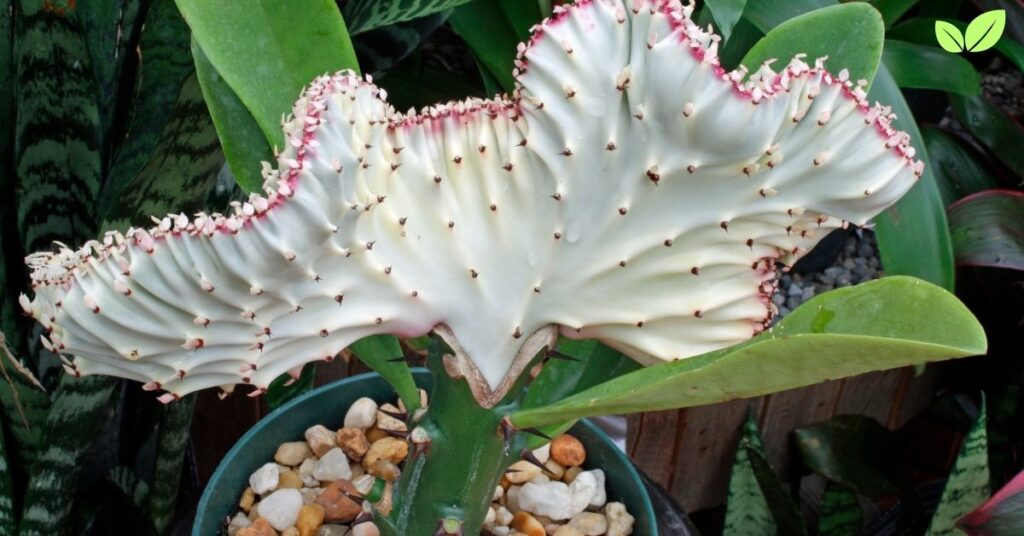
4.1. Ornamental Value
- Aesthetic Appeal: The sculptural appearance of Euphorbia lactea, with its angular branches and variegated patterns, makes it a favorite in rock gardens, desert landscapes, and succulent arrangements. It can serve as a focal point in landscape designs or be paired with other drought-tolerant plants such as cacti and agaves.
- Indoor Cultivation: Euphorbia lactea is also a popular houseplant, often grown in containers where its growth can be controlled. Indoors, it benefits from bright, indirect light and minimal watering, making it suitable for those seeking a dramatic yet low-maintenance plant.
- Crested and Variegated Forms: The crested ‘Cristata’ variety, with its fan-like, coral-shaped growth, is especially prized among collectors for its unique form. Variegated forms are also highly sought after, adding a touch of color to succulent collections.
4.2. Benefits in Sustainable Landscaping
- Drought Resistance: Euphorbia lactea’s ability to thrive with minimal water makes it an excellent choice for xeriscaping, a landscaping method that reduces or eliminates the need for supplemental irrigation. This makes it particularly useful in regions experiencing water scarcity.
- Soil Improvement: In arid landscapes, Mottled Spurge can contribute to improving soil quality over time. Its fallen stems and leaves decompose slowly, adding organic matter to the soil, which can help improve its structure and water retention capacity.
- Windbreaks: In some regions, Euphorbia lactea is used as a natural windbreak or barrier plant. Its dense branching helps reduce wind speed, protecting other plants and crops in its vicinity from wind damage.
5. Challenges and Considerations in Cultivation
While Euphorbia lactea is a hardy and adaptable plant, it does face several challenges in cultivation, particularly when grown outside its native range. Understanding these challenges is essential for ensuring its health and longevity.
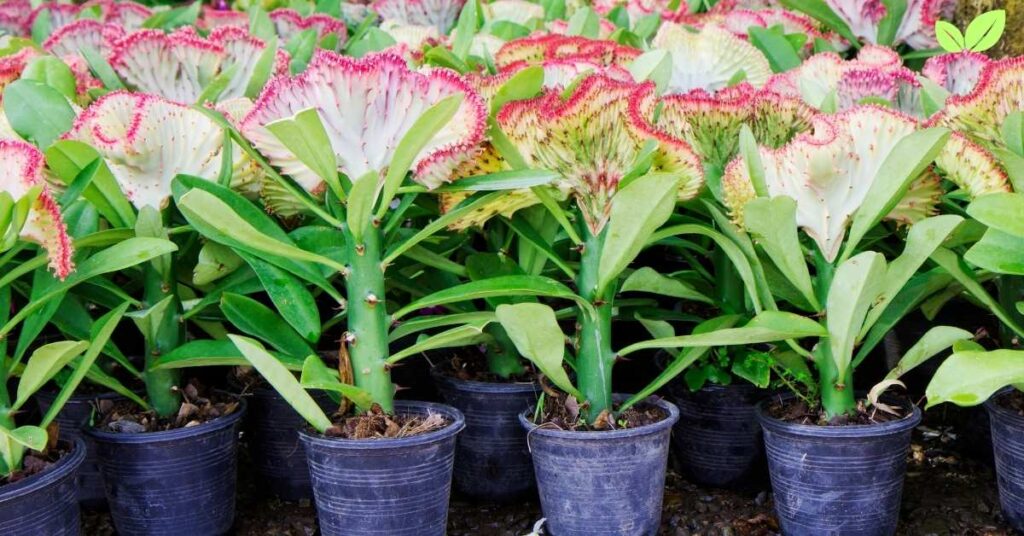
5.1. Sensitivity to Cold
- Temperature Management: Euphorbia lactea is not frost-tolerant and requires protection from cold temperatures. When grown in temperate regions, it should be moved indoors or into a greenhouse during winter months to avoid exposure to temperatures below 5°C (41°F).
- Cold Damage: Exposure to cold can cause Euphorbia lactea’s stems to become mushy and discolored. This damage is often irreversible, necessitating the removal of affected parts to prevent rot from spreading.
5.2. Pests and Diseases
Euphorbia lactea is relatively resistant to pests, but it can be susceptible to certain issues:
- Mealybugs and Scale Insects: Indoors, Euphorbia lactea can attract pests like mealybugs and scale insects, which feed on the plant’s sap. These pests can be managed through manual removal or the application of horticultural oils.
- Root Rot: Overwatering is one of the most common causes of root rot in Mottled Spurge. To prevent this, it is crucial to ensure the soil is well-draining and to avoid watering until the soil has dried out completely. Using a cactus or succulent soil mix can help maintain proper drainage.
- Fungal Infections: In humid conditions, Euphorbia lactea may develop fungal infections, particularly if water is allowed to collect in the plant’s crevices. Ensuring good air circulation and watering at the base of the plant can help minimize the risk of fungal problems.
5.3. Safety Considerations
Due to its toxic latex, Euphorbia lactea must be handled with care:
- Latex Precautions: When pruning or repotting Euphorbia lactea, it is important to wear gloves and eye protection to avoid contact with its latex sap. The latex can cause skin irritation and is especially dangerous if it comes into contact with the eyes.
- Pet and Child Safety: Euphorbia lactea is not suitable for households with curious pets or young children, as ingestion of the plant can cause severe gastrointestinal distress. It is best to place the plant out of reach in such environments.
6. Conservation and Ecological Importance
While Euphorbia lactea is not currently considered endangered, its role in the ecosystems where it naturally occurs highlights the importance of conservation and responsible cultivation practices.
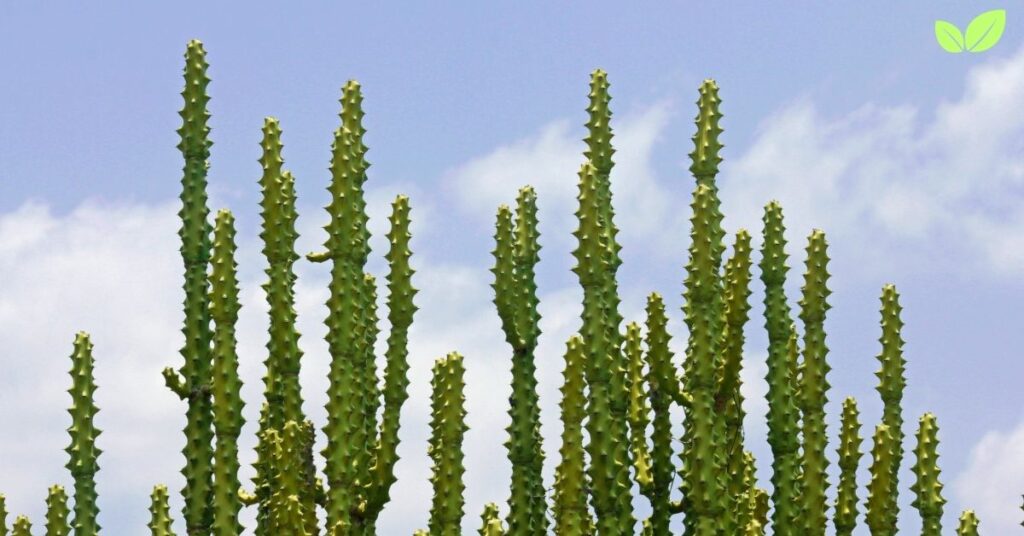
6.1. Role in Native Ecosystems
- Biodiversity Support: In its native range, Euphorbia lactea contributes to the biodiversity of arid landscapes by providing shelter and food sources for a variety of insects and small animals. Its presence supports the intricate web of life in these often-fragile ecosystems.
- Climate Resilience: As a drought-tolerant species, Euphorbia lactea can help maintain plant cover in arid regions that are vulnerable to desertification. By anchoring soil and providing shade, it helps mitigate the effects of heat and water loss, contributing to the resilience of its habitat.
6.2. Sustainable Cultivation Practices
- Avoiding Invasive Spread: In regions outside its native range, it is important to monitor Euphorbia lactea to ensure it does not become invasive. While it is generally slow-growing, it can potentially outcompete native species if conditions are favorable.
- Propagation and Genetic Diversity: Propagation through cuttings is common for Mottled Spurge, but maintaining genetic diversity is important for the health of cultivated populations. Growers should aim to preserve diverse genetic material to ensure plants remain resilient to environmental changes and disease.
Conclusion
Euphorbia lactea is a fascinating and resilient plant that thrives in challenging environments, from the arid landscapes of its native India and Sri Lanka to cultivated gardens around the world. Its unique adaptations, such as its latex production and drought tolerance, allow it to survive where many other plants cannot. As a component of arid ecosystems, it contributes to soil stability, supports a variety of small wildlife, and plays a role in local biodiversity.
In cultivation, Euphorbia lactea is valued for its ornamental beauty and its ability to thrive in low-water conditions, making it a popular choice for both indoor and outdoor landscapes. However, understanding the specific needs and challenges of growing this plant—such as its sensitivity to cold and the precautions needed due to its toxic sap—is essential for its successful care.
By appreciating the ecological role of Euphorbia lactea and adopting sustainable cultivation practices, we can ensure that this remarkable plant continues to thrive, both in its natural habitats and as a part of human-managed landscapes. Its enduring presence in arid regions and its growing popularity in gardens around the world serve as a testament to the adaptability and resilience of nature’s designs.
Read More: Basil: How This Herb Supports Pollinators and Biodiversity in Your Garden

